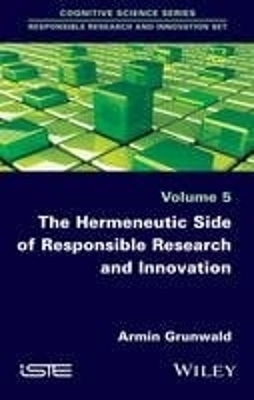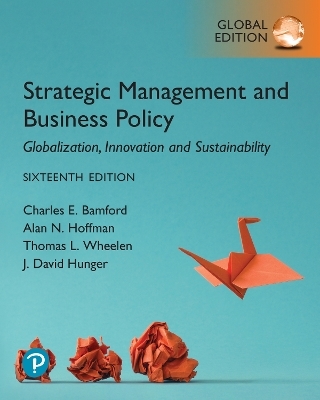
The Hermeneutic Side of Responsible Research and Innovation
John Wiley & Sons Inc (Hersteller)
978-1-119-34089-8 (ISBN)
- Keine Verlagsinformationen verfügbar
- Artikel merken
Armin Grunwald, Professor of philosophy and ethics of technology at Karlsruhe Institute of Technology (KIT); Head of the Institute of Technology Assessment and Systems Analysis (ITAS) at KIT; Head of the Office of Technology Assessment at the German Parliament (TAB).
Foreword ix Preface xiii Chapter 1. What Makes New Science and Technology Meaningful to Society? 1 1.1. Motivation and objectives 1 1.2. The need for orientation in NEST fields 8 1.3. Short propaedeutic 12 1.3.1. The meaning of sociotechnical meaning 12 1.3.2. NEST: new and emerging science and technologies 13 1.3.3. Techno-visionary futures 15 1.4. A brief guide to this book 17 1.4.1. The flow of argumentation 17 1.4.2. The chapters 18 1.4.3. The achievements 22 Chapter 2. Extending the Object of Responsibility Assessments in RRI 25 2.1. Motivation and overview 25 2.2. Some impressions of RRI debates so far 27 2.3. A pragmatic view on the notion of responsibility 31 2.3.1. The concept of responsibility 32 2.3.2. The EEE approach to responsibility 34 2.3.3. Responsibility assessment 35 2.4. The object of responsibility debates in RRI so far 38 2.5. The object of responsibility debates in RRI: an extension 39 2.6. Concluding remarks 43 Chapter 3. Assessing Responsibility by Considering Techno-Futures 45 3.1. Responsibility assessments: introduction and overview 45 3.2. Brief remarks on the epistemology of prospective knowledge 46 3.2.1. The epistemologically precarious character of prospective knowledge 47 3.2.2. Futures as social constructs 48 3.3. Responsibility for NEST: the orientation dilemma 50 3.3.1. Challenges to providing orientation in NEST fields 52 3.3.2. The orientation dilemma 55 3.4. Three modes of orientation 56 3.4.1. Prediction and prognostication: mode 1 orientation 57 3.4.2. Scenarios and the value of diversity: mode 2 orientation 58 3.4.3. The value of divergence: mode 3 orientation 60 3.5. The hermeneutic approach to techno-visionary futures 61 Chapter 4. Definitions and Characterizations of NEST as Construction of Meaning 65 4.1. Motivation and point of departure 65 4.2. Some observations from NEST debates 66 4.2.1. Nanotechnology 66 4.2.2. Synthetic biology 68 4.2.3. Enhancement 71 4.3. The pragmatic character of definitions 72 4.4. Defining and characterizing as meaning-giving activity 75 Chapter 5. Understanding Nanotechnology: A Process Involving Contested Assignments of Meaning 79 5.1. Nanotechnology: a paradigmatic RRI story 79 5.2. The early time of nanotechnology: troubled beginnings 82 5.2.1. Apocalyptic techno-visionary futures related to nano 82 5.2.2. Threats to human health and the environment 84 5.2.3. Philosophical characterizations 86 5.3. Defining nanotechnology: a mission impossible? 89 5.4. The meaning of nanotechnology: the shift from a revolutionary to a quite normal technology 94 5.4.1. Looking back: the development of nanotechnology s meaning 94 5.4.2. Hermeneutic work on nanotechnology 96 5.4.3. Lessons learned for RRI debates 99 Chapter 6. Robots: Challenge to the Self-Understanding of Humans 101 6.1. Autonomous technology: challenges to our comprehension 101 6.2. Robots that can make plans and Man s self-image 103 6.2.1. Planning robots 103 6.2.2. Planning as special type of acting 105 6.2.3. Step 1: Can robots act? 107 6.2.4. Step 2: What do robots do when they plan? 109 6.2.5. The difference between planning humans and planning robots 113 6.3. Technology futures in robotics 115 6.4. The hermeneutic view of robots 119 Chapter 7. Enhancement as a Cipher of the Future 123 7.1. Introduction and overview 123 7.2. On the semantics of (technical) enhancement 125 7.2.1. Enhancement as action 125 7.2.2. Technical enhancement 127 7.3. Human enhancement 128 7.3.1. Enhancement in history: some ambivalences 128 7.3.2. Human enhancement: some illustrations 130 7.3.3. Healing, doping and enhancement 132 7.3.4. Human enhancement: from visions to the marketplace 136 7.4. Animal enhancement 138 7.5. Conclusions 142 7.5.1. Conclusions I: dissolving borders between humans, animals and technology 142 7.5.2. Conclusions II: better understanding contemporary time 144 7.5.3. Conclusions III: technicalizing the self-image of humans 148 7.5.4. Conclusions IV: RRI debates on enhancement 149 7.6. Enhancement as a cipher of the future 151 Chapter 8. Technology to Combat Climate Change: the Hermeneutic Dimension of Climate Engineering 153 8.1. Climate change and the ambivalence of technology 153 8.2. Limitations of the previous approaches to finding a solution 156 8.3. Climate engineering as a technical option 157 8.4. Chances and risks of climate engineering 159 8.5. The hermeneutics of climate engineering 162 8.5.1. Climate engineering: revival of Baconism? 163 8.5.2. Expanding the object of responsibility 166 8.6. Epilogue: hermeneutic extension of the imperative of responsibility? 168 Chapter 9. Hermeneutic Assessment: Toward an Interdisciplinary Research Program 169 9.1. Assigning meaning to NEST as object of responsibility 169 9.2. Hermeneutic approaches 172 9.3. The emergence of NEST meaning: hermeneutic assessment 175 9.3.1. The dynamics of assigning meaning 175 9.3.2. NEST meaning: understanding origin and process 178 9.3.3. NEST meaning: understanding content 180 9.3.4. NEST meaning: understanding diffusion and impact 183 9.4. Reflection and epilogue 185 Inspiration Behind the Chapters 189 Bibliography 191 Index 215.
| Erscheint lt. Verlag | 26.11.2016 |
|---|---|
| Verlagsort | New York |
| Sprache | englisch |
| Maße | 150 x 250 mm |
| Gewicht | 666 g |
| Themenwelt | Wirtschaft ► Betriebswirtschaft / Management ► Unternehmensführung / Management |
| ISBN-10 | 1-119-34089-6 / 1119340896 |
| ISBN-13 | 978-1-119-34089-8 / 9781119340898 |
| Zustand | Neuware |
| Haben Sie eine Frage zum Produkt? |
aus dem Bereich


